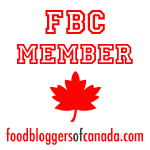First of all, big thank you to Bob from BS’ in the Kitchen. He told me that he made those lights himself and that he has a tutorial on the BS blog. Thank you, you made my day with this. We had a food blogger meeting (more in a separate post) and we talked about pictures and lights and such. I knew about these lights before but had no idea I could make them myself.
My kitchen is crappy when it comes to light, though I have two head lights they are not really good natural light quality. I also have 3 big windows with morning sun. However, most of my baking happens when it’s darker so taking pictures is a real challenge. With these lights it will be much easier and I hope for some real good stuff.
The original post from Bob can be found HERE.
You can buy the Lowel Ego Lights at Amazon of course or you look at their website and see if there is a retailer near you. But if you want to safe some money and if you are sort of crafty this will be no problem for you.
This is what you will need:
– Foam board (one will do for two lamps) – $4.99
– Cross stitch mesh (10.5×13.5 inches), Aida (it is white) – $7.94 for 2
– 100 Watt Daylight CFL bulb (1600-1500 lumen), 23 Watt – $23.96 for 4
– Keyless light socket (that means no switch on the socket) – $12.90 for 2
(mine were made of metal, so I think they were a bit more expensive)
– Lamp cord with switch – $9.64 for 2
– Twin socket adapter – $9.40 for 2
Makes a total of: $68.83 for two lights (tax not included).
Tools:
– X-acto knife – $6.49 if you don’t have one
– Glue gun
– Ruler
I bought the foam board and X-acto knife at Michaels. The electrical things I bought at Rona and the light bulbs (because Rona didn’t have them) at Home Depot. The cross stitch mesh I bought at Walmart because it is cheaper there, almost half the price but you can buy it at Micheals too.
1. Start with the foam board and mark two sheets that are 10.5×13.5 inches in size. Then cut them out with the X-acto knife. Be careful not to cut yourself. Bob gave a great tip: use the ruler to make sure you cutting line is straight.
 Cut out board and light socket hole.
Cut out board and light socket hole.
2. Once you have that you need to mark the middle. That’s where you will have to cut a circle for the light socket. Finally, cut along the middle light but make sure you don’t cut it in half. You need to bend it.
3. For the base of each light you can use the rest of the foam board. Simply measure 5.25 inches for each side and 1 inch away from the edge. (Make sure you use the edges where you didn’t cut before, it will be straighter.) Cut out the whole and then slightly cut the one inch so that you can bend it. See picture for reverence.
 The base: the inner lines are 5.25 inches, the outer line is plus 1 inch.
The base: the inner lines are 5.25 inches, the outer line is plus 1 inch.
3. Now you glue you back and your base together. Make sure it has a 90° angle. When using your glue gun BE CAREFUL. You can easily burn yourself, which we don’t want of course. I did, on my pinky. *autsch*
 That’s why you need that extra inch, for support.
That’s why you need that extra inch, for support.
4. The wiring seemed the most difficult part for me but even I was able to get that done. Take the light socket apart and stick the cord through the bottom half. Then bend both light cord tips a little and screw them onto the screws. The ripped wire connects to the golden screw, the other one connects to the silver screw. After that you put the light socket together again and test it with a cheap light bulb. Just in case.
(See Bob’s pictures for reference, I was too nervous to take pictures.)
5. Now its time to assemble you lights. Push the light socket through the hole, you might to need that a bit bigger. Then you can attach the twin socket adapter and the bulbs. Finally, you glue the cross stitching mash on the sides of the lamp and you are done.
You can set up your lights any way you like. You can just use one or you can use both, that’s up to you. Either way, use a reflector so that the light bounces off. When using two lights you can put one foam board on top and a big paper in the back to almost create a light box. I will have to experiment with the whole setup, it also depends on the size of the object. Small objects will be fine on just white but for bigger one I think I want some colour and texture. I bought some papers for the background and will see how that works.
I hope this DIY will help you to make your own Ego Lights and shoot some amazing photos.





